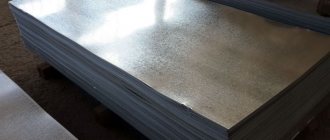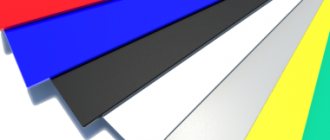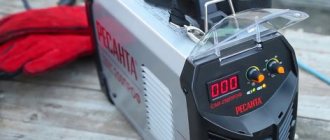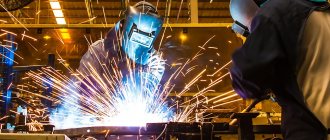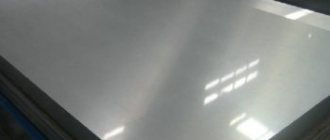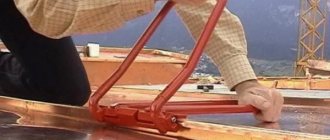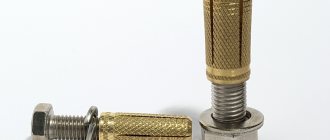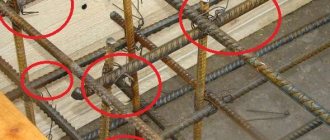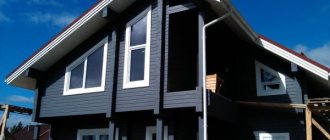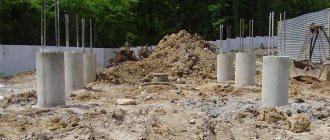Galvanized steel sheet is a type of rolled metal, a steel sheet coated with a thick layer of zinc to protect against corrosion.
The most resistant, lightweight and economical material with high anti-corrosion characteristics is considered to be galvanized steel sheet or galvanized sheet steel . This material is widely used for the manufacture of roofing elements, ventilation ducts, as well as drainpipes, etc.
Description of galvanized sheet
Regardless of the size of the galvanized sheet, at the time of creating products at the plant, preference is often given to metal marked ST08PS.
In this case, the abbreviation “PS” means the presence of semi-quiet steel in the body. The quality of this type of raw material is very high, which puts it much higher than boiling or semi-boiling metals.
Depending on the needs of production or individual orders, the introduction of other classes of steel is not excluded:
- Art. 1.
- 08KP.
- 08PS.
- 08YU.
It is better to clarify all the subtleties of the characteristics of the finished product directly at the time of purchase and compare the data with the drawn up diagram of the future object.
Quality control
To evaluate the quality characteristics of a zinc-coated sheet, just look at it. The surface must be flat, smooth, without cracks.
In sheets of cold stamping and general purpose, roughness, spots, and sagging are allowed. In other types of galvanized metal, there should be no defects.
Thus, we found out that galvanized sheet steel has almost the same characteristics as stainless steel, but at the same time its price on the market is much lower.
The main cost consists of the price of rolled metal, the cost of zinc and the cost of a specific coating method. For example, a sheet coated by galvanizing will cost more than by hot-dip galvanizing. Also, the price depends on the thickness of the sheet, zinc coating and its quality. In any case, if the sheet is suspiciously cheap, it means the manufacturer has saved on the quality or thickness of the zinc layer.
Sheet production technology
To adjust the weight of galvanized sheets, there is a special scheme that is consistent with the requirements of GOST. After processing the hot-rolled strip using modern equipment with the ability to perform acid pickling, the workpiece is sent further along the conveyor.
Volumetric machines roll out steel to a given thickness, and then the metal is sent for annealing. The final stage will be galvanizing, which can only be done using a specialized apparatus.
Important! Enterprises adhere to GOST 19904-74, deviating from the requirements generally accepted by regional authorities, products may be rejected.
Types of specimens
The assortment of goods in construction stores is large enough that you don’t have to face problems at the stage of choosing the ideal version; you should prepare for the purchase in advance.
Among the most popular and sought-after samples are sheets for purposes such as:
- For painting.
- General purpose.
- For cold profiling.
- Instances for cold stamping.
The last type of product is divided into several items, including normal, deep and very deep hoods. You can find out about the markings by looking at special abbreviations in documents or quality certificates for the product.
Search for alternatives.
In 2001, as a result of research “Bohm, S., Sullivan and JH, & Worsley, A new corrosion test for organically coated galvanized steel products. MaterialsandCorrosion" it was found that coating steel with zinc is not as effective as, for example, coating zinc with various inorganic and organic additives.
Galvalume coatings showed excellent results: zinc with a small percentage of aluminum. Compared to pure zinc, the coating had greater uniformity, increased tensile strength and excellent corrosion resistance over a wide temperature range.
In Coni, N., Gipiela, M. L., D'Oliveira, A. S. C. M., & Marcondes, P. V. P. (2009). Study ofthe mechanical properties of the hot dip galvanized steel and galvalume®. Journal of the Brazilian Society of Mechanical Sciences and Engineering" it was determined that standard zinc coating was easily degraded in a simulated carbonate-chloride environment. These findings have prompted the search for alternative roofing sheet coatings, especially for industrial areas contaminated with chlorides or carbonates.
The development of a 55% Al-Zn alloy (an organic composite material) has made it possible to increase the corrosion resistance of roof sheets several times (compared to conventional zinc). Organic composite coatings form a protective film that inhibits the steel corrosion mechanism under severe operating conditions (acid rain or the presence of dissolved salts). Moreover, a mixture of a phosphate type pigment with a calcium-containing pigment significantly inhibited the corrosion of steel in acidic environments.
Scope of application of parts
Since the sheets are quite durable, companies producing various goods are interested in purchasing such material for the production of all kinds of products. We are talking about mechanical engineering, the creation of buckets or tanks, drainage communications, roofing coverings and heating pipes.
Blanks for further processing are selected taking into account the wall thickness of the planned elements produced at the plant; the raw materials are quite convenient to store, because the influence of corrosion is minimized.
The material is not eternal, since only the top surface coating protects the metal from external factors.
Interesting fact! The effect of rust on galvanized elements from the inside can be noticed when inspecting hot water pipes in residential multi-storey buildings; over the years, such circuit elements change color and even leak.
Who discovered galvanized metal and when?
So, in a nutshell, galvanizing (also known as galvanizing or simply “galvanizing”) is the process of applying a protective coating of zinc to a metal product, including steel and other iron alloys. This technique is used to prevent rust from forming on the base metal and provide long-term weather protection. Zinc is the most common material for protecting steel products from corrosion; more than 40% of the zinc mined in the world is used for this purpose. Zinc coating is applied to sheet and long products, machine parts, fasteners, pipes and other products.
In general, the history of galvanizing is closely connected with the history of zinc: jewelry made from alloys with a zinc content of up to 80% was created 2.5 thousand years ago. Brass, an alloy of copper and zinc, can be traced back to at least the 10th century BC. Pure zinc was first obtained in 1738.
The first (officially recognized) step towards galvanized rolled metal was made by the French chemist P. J. Melouin. It was chemistry, which seemed not far removed from alchemy. Pure iron is dropped into a tank of molten zinc, and a shimmering silver coating miraculously appears on the iron (and Melouin receives a galvanized sheet). The scientist presented his 20-page report on the experiments to the Royal Academy of Sciences in 1742.
Interest in Melwin's discovery quickly spread in scientific circles. First, molten zinc was used as an inexpensive protective coating for household utensils. Already in the second half of the 18th century, this method of protecting metal utensils from corrosion was used very widely in some parts of France.
Calculation of the weight of galvanized sheet
Regardless of the industry in which galvanized workpieces are used, before starting the product manufacturing process, professionals calculate the weight of the profiles.
A special formula was developed for this stage; it looks like this: M = M1 + M2. M refers to the weight of the material, M1 indicates the weight of the steel used, M2 corresponds to the amount of zinc.
To simplify the work of employees, tables were developed; thanks to them, calculations can be made much faster, this is due to the similarity of the raw materials supplied from the manufacturer’s plant.
GOST requirements
At the time of creating sheets, professionals in their field must adhere to generally accepted laws regarding the manufacture of products.
These documents indicate important technical points, including:
- Thickness of the zinc layer.
- No torn edges.
- Areas with sagging on the surface are excluded.
- Items with mechanical damage are prohibited for sale.
All companies that care about their customers and image closely monitor compliance with GOST requirements. Employees are allocated for the work, they check the visual conformity of the product and, if necessary, carry out a number of research activities.
Corrugated sheet
The building material is in great demand; it belongs to one of the varieties of galvanized sheets.
- When creating products, manufacturing plants are guided by another regulatory document, it is GOST 24045-94.
- Since the service life of this type of product is at a high level, it is often used for roofing; reliability and resistance to mechanical damage protects the roof of a building from bad weather conditions.
- The low price on the shelves encourages people to increasingly use corrugated sheets when constructing various fences; the transverse rigidity is quite good; the finished work has an attractive appearance due to the coating in one of the shades the client likes.
Cost and selection criteria
The cost of galvanized sheet steel depends on several factors. These include:
- sheet size and thickness;
- density of protective coating;
- grade of steel used in production.
During the galvanizing process, a layer of film is formed on the metal surface. During operation, it gradually wears out. The thicker the protective ball, the longer the service life of the material. There are three classes of sheets of this type - increased, first and second. The thickness of the coating is 40-60, 18-40 or 10-18 microns, respectively. A crystallization pattern may form on the steel surface during galvanizing. It gives the material increased decorativeness.
Table of sizes and weights of galvanized sheet
The choice of sheet depends on the area and conditions of its use. It is necessary to take into account the GOST requirements for a particular object, which will help determine the thickness and other parameters. In the process of purchasing material, it is necessary to evaluate its quality. There may be minor defects: light and dark spots, sagging, drips, abrasions, roughness, cavities and scratches. The listed aspects do not affect the strength characteristics. Typically, sheets with such shortcomings are purchased for painting.
You should not buy material that contains chips on the surfaces or has uneven thickness. Such deviations indicate a violation of production technology.
Share
Tweet
Share
Share
We also recommend
- The world's largest exhibitions in the field of metallurgy for 2022-2023
- Cleaning metal products: simple tips
- What equipment is subject to certification?
Click to comment
Useful tips
When visiting a specialized store, experts recommend taking a closer look at the product labeling, which can tell you a lot.
Depending on the task at hand, a person can easily select the ideal execution option and complete his plan in the shortest possible time; working with ready-made sheets is very convenient.
It would not be superfluous to inquire about the availability of quality certificates, because only these documents will confirm the absence of possible defects in the product.
Material selection
When choosing, it is very important to inspect the entire sheet for defects, cracks, blisters, scratches, cracks, and so on. Moreover, it is better to immediately choose thicker material, since its service life is much longer.
Diamond cutters for stone: options, features, how to choose- LLC GC "TransStroyKomplekt" is a reliable supplier of cast iron products in Russia
Features of diamond blades for wet cutting
If you choose a polymer-coated material, its quality should also be carefully checked, otherwise there is a risk of rapid destruction.
